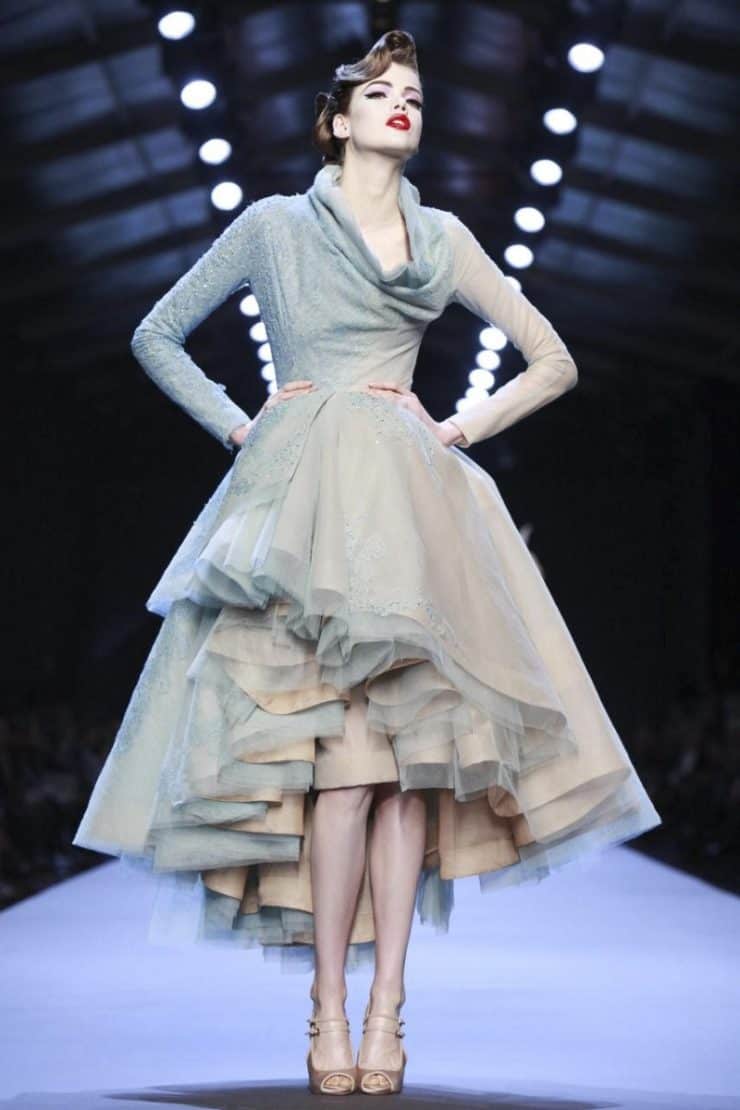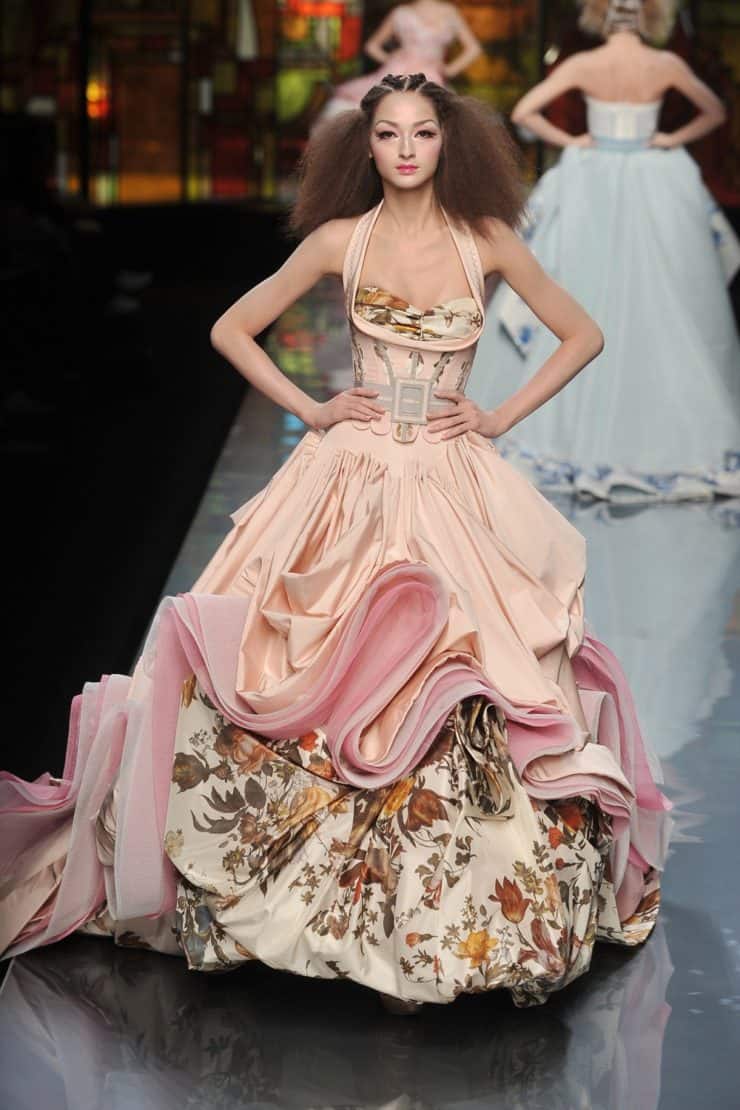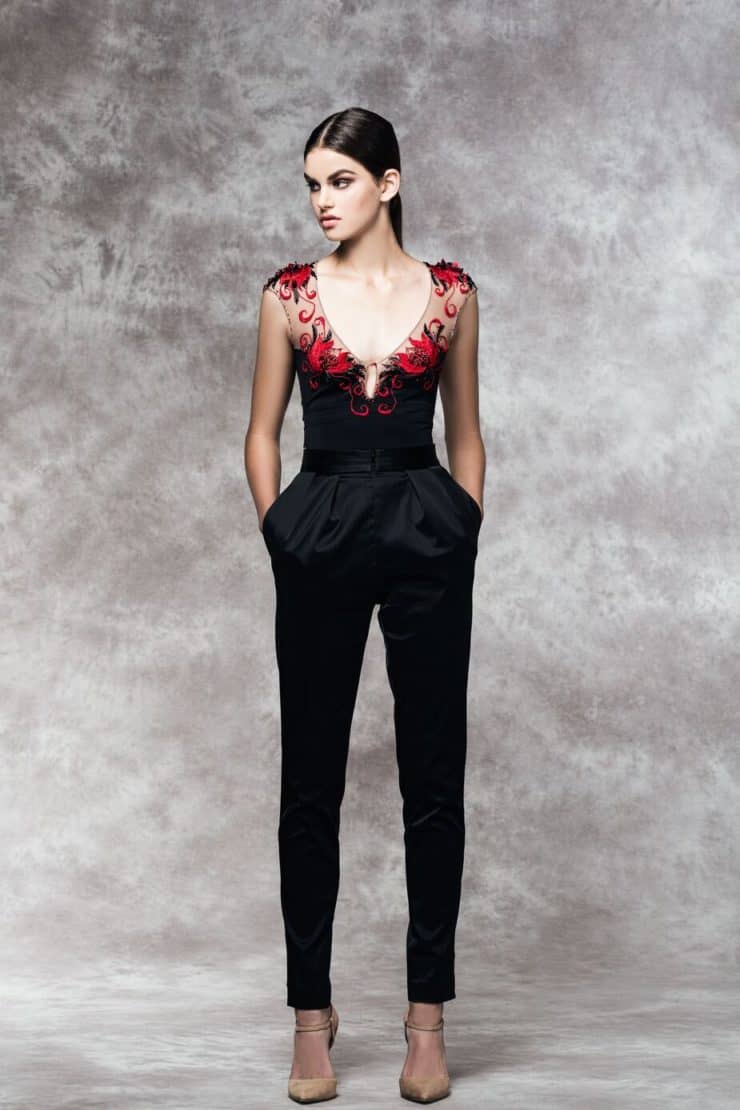There are many reasons why couture is so expensive compared to ‘regular’ designer clothing. We asked a couture customer and two top eco-couture designers to shed some light on the issue
By Chere Di Boscio
When most of us think of buying less, but buying better, we don’t think of buying haute couture. And no wonder. These are the most expensive clothes in the world; the ultimate statement in slow fashion, and the ultimate expression of wealth.
But couture clothing is more than just fashion; it’s truly an art. And indeed, one single couture dress can parallel the cost of a piece of art, with good reason: dozens of highly trained artisans work on each piece, sometimes for months. But does that fact alone justify the price, which can go into the hundreds of thousands of dollars for a single dress?
I asked a couture customer, who counts several dozen couture pieces in her closet (but insists on being anonymous for this article), and two top eco-couture designers, Kristina Viirpalu and Jiri Kalfar, to give us their take on why couture is more expensive than other high quality designer clothing.
Image below: Christian Dior Couture
The Haute Couture Customer
Our anonymous customer, who I will call ‘Fatima’ here, has bought several couture pieces from top designers, including Valentino, Chanel, and Alexander McQueen couture. She mainly wears these pieces to events such as weddings and red-carpet galas.
The most she has paid for a dress was £125,000 – and that was for her own wedding gown.
Obviously wealthy, she is more than happy to pay such prices, for several reasons. She cites these as the quality of the garment; the personalised attention, and the attention to detail. I asked her the typical procedure for buying a piece of couture.
“I go to the couture shows in Paris to see what’s on offer. If I can’t make it, some designers will send the collections to my home. After the shows, the publicists for the brands will send me the look books and if there is something I saw that I liked (from the shows), I will ask to order it. They will only make one dress per region. So for example, if someone else in Europe has ordered that gown, I can’t have it.”
“If the design is available, I go to the designer’s atelier and meet with the head seamstress, who will take my exact measurements for the dress. A toile (mock up dress) is first made from the sketches that the designer makes, and that’s the first step in making my dress. In a few weeks, I return for the first fitting, to see if the dress is fine on my body. Depending on the style, I may have to go back for a few fittings.”
Fatima believes the service she receives is a big factor in why she’ll pay so much for couture: “The head seamstress even flew herself to my home (in the Middle East) for one fitting of my wedding dress. You don’t get that kind of care outside couture.” She adds that the design houses that make the dresses will also happily repair any wear and tear on a dress they made, no matter how old the garment is.
In addition, some designers are happy to make changes to their catwalk designs – for example, a change of colour or embellishment – to suit the client. Not all will do so, however. Fatima says there’s one maison in particular that refuses to make any changes whatsoever to their designs, and that’s fine with her. “Would you ask Picasso to change the colours he used so his painting matches your sofa?” she laughs.
Image below: Christian Dior Couture
A Closed World
Fatima is fortunate enough to be married to an actual Prince – her last name is well-known throughout the world. But for others, breaking in to the world of haute couture requires an invitation and an appointment, and usually begins with knowing someone. That may be a friend who is a client, or it could be a well-connected personal shopper
But it’s not only the world of haute couture clientele that’s rather closed – it’s not easy for brands to enter, either.
To have a label officially christened as being ‘haute couture,’ the process of making garments must be approved by the Ministry of Industry. All items must be sewn by hand and made to the client’s measurements.
The design house must be a part of the Chambre de commerce et d’industrie de Paris, and must have at least 15 full time employees based in Paris. The label must display a special collection of not less than 25 separate outfits twice a year. The list of haute couturiers is revised each year, and currently includes the likes of Alexandre Vauthier, Alexis Mabille, Bouchra Jarrar, Chanel, Dior, Giambattista Valli, Givenchy, Jean-Paul Gaultier, Stéphane Rolland and others.
There are probably no more than a few thousand haute couture clients in the whole world, and only a few hundred regular clients who place substantial orders. Some of the reason why couture is more expensive from these designers is surely due to their marketing costs (putting on couture shows isn’t cheap), and of course, you pay for the label.
Of course, there are other couture designers that are not ‘haute’, but still provide their clients with bespoke, high quality clothing.
Here below, two such designers comment on why couture is more expensive – even if it’s not certified ‘haute’.
Image below: Alexander McQueen Couture
Kristina Viirpalu: Handmade in Estonia
Kristina Viirpalu’s Couture creations pay homage to historic Estonian embroidery and knitting techniques. Romantic patterns, styles and ornaments are playfully mixed with contemporary sources of inspiration to meet the needs of a modern woman.
“My designs are famous for Haapsalu shawl knitting technique. Haapsalu being a small town located in Western Estonia, where this ancient knitting technique originates from,” she states. “The structure of this knitting patterns is light and fragile, like a spider’s web, complete with little dots in the pattern that can only be hand knitted. No machine can replicate this. This knit is historically used in making bridal shawls, but my design re-creates them as bridal gowns.”
She continues: “Embroidery patterns are also historic, based on patterns originally used on national costumes and wedding blankets, used as dowry in weddings in olden times. We take these patterns and create them in a more modern way with new colours, yarns and embellishments.”
It is indeed the skill behind this embroidery that hikes the price of couture up. These artisans are a rare find these days, and Kristina knows it.
“I consider myself very lucky to have found such talented artisans as the women I work with. My knitters are local women, true masters of our heritage knitting techniques, who have had this skill in their families, handed down for centuries. The embroidery artisans work in-house in my atelier, so we work closely together in creating all these detailed patterns. All my workers are masters of their skill, well appreciated and are well compensated for their work,” she says.
Wearing History
By drawing inspiration from her history, using and modernising these patterns and techniques, Viirpalu feels she is keeping these traditions alive in the modern world. It’s something her clients feel deeply attached to: “My brides especially love that they can wear their heritage on their dress on their special day and later have the dress as a piece of art to cherish and hand down to their children,” she’s proud to say.
Each piece is painstakingly made by hand, and takes up to several months to complete. The cost is justified when you consider each garment is unique, one of a kind, tailored to fit perfectly, and is also timelessly stylish.
Image below: Kristina Viirpalu
Time, Talent And Quality Materials
When we’re talking about couture, only the finest fabrics are used, and these are often uniquely made-to-order for the design house itself.
Kristina says: “I like to use a lot of wool crepe and wool tweed fabrics, mostly sourced from mills in Italy, France and the UK. But the most important part of my creations are not so much the raw fabrics or materials themselves, but more what we do with them. A bowl of glass beads becomes an opulent, intricately sewn surface on a bodysuit. A ball of thread becomes a fascinating tapestry decorating a dress.”
And such artistry, as mentioned, takes time. A lot of time.
“For my knitter to make a whole knitted gown, it takes about a month. For my embroidery artisan to create a more abundant kind of bodysuit – it’s about a week of embroidering. To crochet details on a gown – at least a week. On top of that, there’s also sewing and fitting and lots more work to finish the garment. Some designs are more intricate than others, but it’s definitely a time consuming process,” the couturier states.
Of course, the customer is paying these skilled hands for their time, dedication, and experience. They imbue each piece with history, personality, and beauty in a way no machine ever could.
Image below: Kristina Viirpalu
Precision, Knowledge And Experience
When asked: “why is couture so much more expensive than off-the-rack clothing?” another sustainably minded European couturier, Jiri Kalfar, gave us this answer: “It’s because couture is handmade and manufactured in studio. It is very time consuming, and generally there is only one or a small handful of each item that is made. Couture clothing requires utmost precision, knowledge and experience.”
While Viirpalu focuses a lot on embroidery, Kalfar employs different kinds of artisans in his work – which is another reason why couture is more expensive. It simply takes more people to make one garment.
“The main people (for him in his studio) would be the Head of Construction and the main seamstress. I am very lucky that in our case, it is the same person, but that’s not common. Then there could be embroiderers, pattern makers and many other specialised artisans. It differs a lot depending on the product you want to produce – for example, if (the clothing) should be structural, bridal, or even 3D printed.”
Ethics Don’t Come Cheap
The designer also says that higher demand for sustainability means that there’s a higher cost – and value – placed by the customer on more natural materials, crafted by individuals with talent, rather than by machines.
“What I am seeing is that people are slowly moving back to tradition. It is great that they want to be familiar with the actual maker of their clothes, to be able to hear the story of the garment, to search for their perfect item and to know the journey, to look for local products,” he says.
Of course, I pointed out to the designer that due to the high cost of couture, not everyone can afford even one piece of couture, as much as they would love to. In fact, some couture customers can even only afford a few special pieces in their lifetime. And he answered: “With my clients, I find that there is a very “hybrid” model of shopping, such as by wearing high street brands, but then combining those pieces with unique local and sustainable designers, couture, or rare vintage clothes even. I think that’s amazing because they are getting really comfortable to wear “lesser known” brands that think more sustainably (rather than focusing on typical luxury brands).”
Image below: Jiri Kalfar
Vegan Advantage
Unlike most couture designers, who use loads of fur, feathers and silk, Kalfar has decided to follow the zeitgeist and work with animal-free fabrics like innovative forms of vegan leather. Being a vegan couturier is actually one of his unique selling points.
“I am vegetarian myself (I try to be vegan but fail sometimes with cheese). I don’t think any being should suffer for our vanity and nowadays we have so many options and replacements that it is important to show and educate people that you can live in an animal-cruelty-free society,” he states.
Making this choice has helped him with his supply chain throughout the pandemic: “Since we use mostly organic and vegan fabrics, we haven’t had a problem with supply, since there is smaller demand already. We use a local manufacturers, too, so we could continue almost as normal. We just took it slower.”
Despite the fact that many people have lost their jobs, Kalfar was surprised to find that he was getting more orders than before Covid: “We have had a bigger demand (post-pandemic). Maybe it’s because people have had more time to appreciate nature, and are now looking for something that doesn’t damage the planet, like fast fashion,” he muses.
Image below: Jiri Kalfar
Summary: Why Couture Is So Expensive
To sum up, there are myriad reasons why couture is more expensive than any other form of clothing.
All couture ateliers must pay for the talent they bring in. Learning how to cut complex patterns, do intricate beading, embroidery and buttoning, not to mention other skills like creating pleats or lace, takes a lot of training. And these skills don’t come cheap.
Secondly, couture houses use only the best fabrics and materials. In some cases, more expensive sustainable materials, such as peace silk or cactus ‘leather’ will be employed to replace less ethical fabrics.
All couturiers are expected to give incredibly personalised attention, and the larger brands have the added expenses of putting on lavish shows during couture week to attract a handful of buyers. And of course, ultimately, you’re paying for the unique talent, knowledge and artistry of the designer.
Given that so few can afford it, is there a future for couture? Kalfar provides the last words on the subject:
“I think so. I hope fashion will become slower, and that quality will become more important than quantity. If our clients want to be more “planet-friendly,” that’s the best security we have.”
- Our Top 10+ Natural Toothpastes - March 27, 2024
- Why LED Light Therapy Skincare Works - March 21, 2024
- 10 Places To Rent Designer Clothes - March 15, 2024














